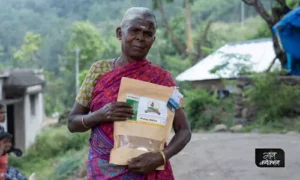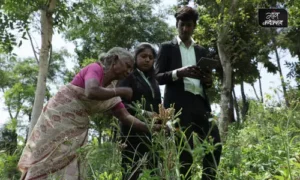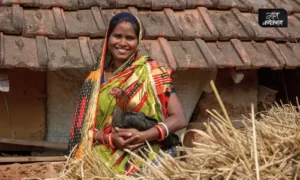Lucknow, Uttar Pradesh
Do you know that every ten minutes, snakebite claims the life of one person in India? Of the total 2.8 million people bitten annually by snakes in India, 58,000 people die. And up to 94 per cent of the snakebite deaths are from rural India. These are the findings of a July 2020 study titled Trends in snakebite mortality in India from 2000 to 2019 in a nationally representative mortality study published by eLife, which is a non-profit organisation inspired by research funders and led by scientists.
To raise awareness on preventing snakebite deaths, Gaon Connection has launched a campaign — The Golden Hour. As part of this month-long campaign, Gaon Connection interviewed Joy Kumar Chakma, medical scientist at the Indian Council of Medical Research (ICMR), New Delhi.
Watch interview:
Chakma has also authored White paper on venomous snakebite in India, which was published last year in 2021. The scientific paper discusses the various reasons which could be attributed to the high mortality and morbidity due to venomous snakes. It also provides recommendations on policy decisions, improvement on the quality of venom and anti-snake venom.
Also Read: ‘Adopt the RIGHT approach to treat a snakebite’
Excerpts from the interview:
Gaon Connection: How does anti-snake venom work? How is it made?
Joy Kumar Chakma: Anti-snake venom is an antibody and venom is like a protein. Anti venom neutralises venom by binding itself with the venom’s molecular structure. This prevents venom from spreading in the body.
In venomous bites, it is advised that anti-snake venom should be given as soon as possible. Any delay in this would mean reducing the neutralising capacity of the anti-snake venom.
Anti-snake venom is mostly manufactured in Tamil Nadu. The venom is collected from the big four species — common krait, Indian cobra, Russell’s viper, saw scaled viper — available locally. The venom is then injected into the horse to form antibodies. This anti-snake venom is used in treating snakebites across the country.

Since the anti-snake venom is manufactured using venom from only a specific region, its potency could be reduced. There is difference in bio chemical variation as there is inter species variation in anti-snake venom manufactured.
GC: Anti-snake venoms are BIG FOUR specific. Is there any effectiveness issue if the snakebite is not among the big four?
JKC: About a million snakebites are estimated in our country. In such cases, anti-snake venoms are administered. In India, a polyvalent anti-snake venom is produced for the treatment of envenomations from the ‘big four’ snakes.

This was developed back in 1895 over 100 years back. We have been following that method since then. It is our observation that majority bites are from these four species. Considering that polyspecific venom was developed.
GC: A 2019 report pointed out that currently marketed antivenoms exhibit poor dose efficacy and venom recognition potential against the ‘neglected many’ species of snakes. Premium serum antivenom failed to neutralise bites from many of the neglected species. What does this suggest?
JKC: It is a clear fact that there are other medically important snakes, at least 15-20 species for which we do not have specific anti-snake venoms. But it could be possible that cross reactivity may help in curing envenomations from other snakes. But this has not been proven. It is a harsh reality that we don’t have monovalent venoms.
GC: How can snakebites be prevented? Suggest areas of improvement.
JKC: Snakebites deaths are preventable. But the most important is community intervention. Farmers are at the risk. They must wear gum boots before going to the jungles and fields. Snakes often bite below the knees. So gum boots are effective in protecting them from bites.
There are also some myths associated with snakes that they drink milk. Snakes are said to dance to music. But the truth is they cannot hear you. There should be awareness at the village level. People should go to health centres for treatment of snakebites and get anti-snake venom as soon as possible.

Besides, there is a need to do more study and research on developing specific monovalent anti-snake venoms for medically important snakes other than the big four. They cause disability and mortality as well.
We also do not have a test or diagnosis tool to check if the bite is venomous or non-venomous. We are working in ICMR to make a diagnostic tool to identify the bite. We need to study potency and inter species variation in present anti-snake venom used widely across the country.
GC: How does the government transport anti-snake venom to primary and community health centres?
JKC: India is running its massive vaccination campaign against COVID19 through a large network of cold chains. The central government procures anti-snake venoms and provides those to state governments and health centres. Similar is with anti-snake venom distribution.
Although anti-snake venom is available for commercial purpose, the government procures anti-snake venoms at a subsidised rate and through cold chain it is supplied in adequate quantities to health centres based on vulnerability and incidences of snakebites in any state.


















